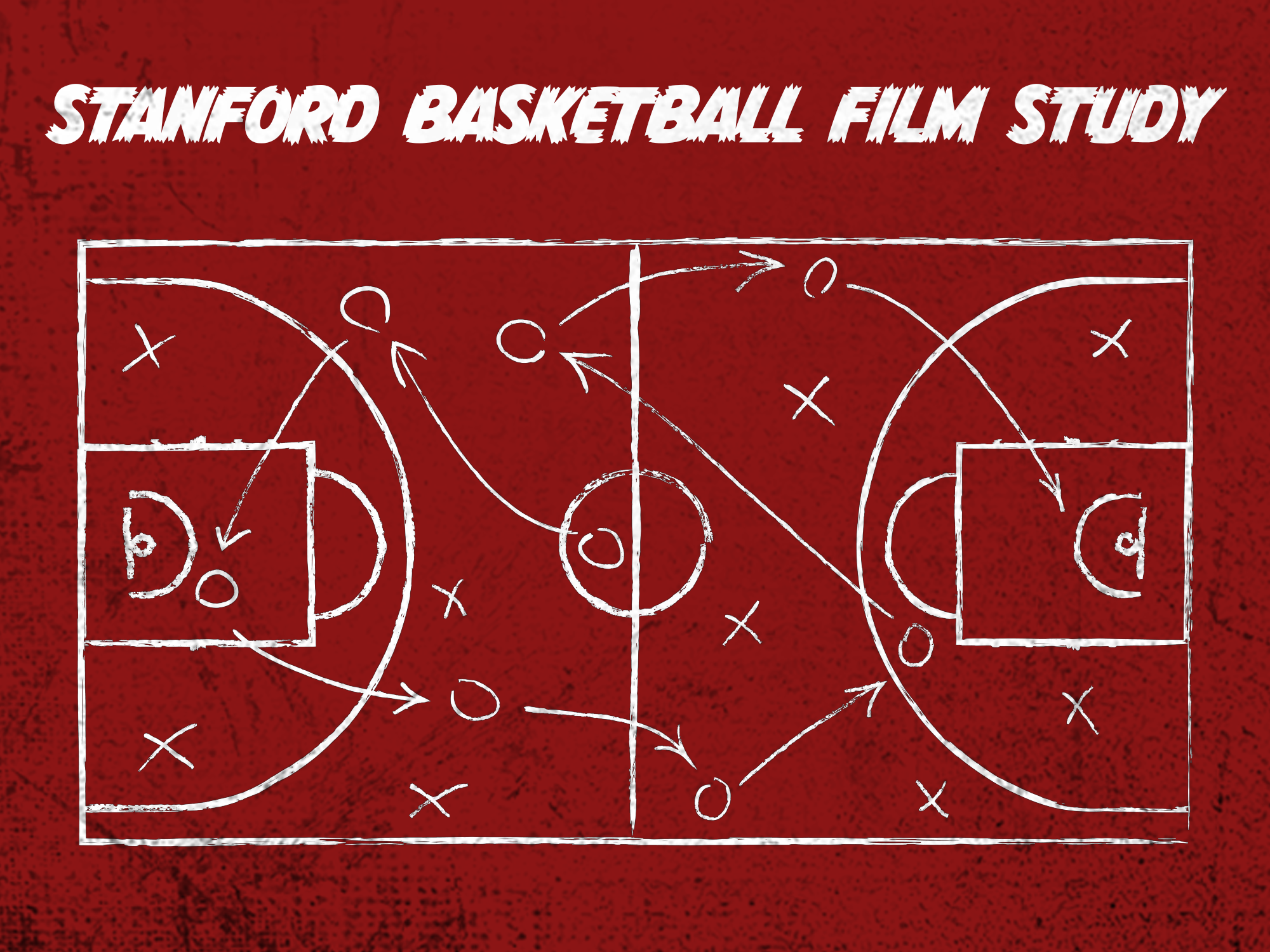Previous installations of Stanford basketball film study have taken a look at empty ball-screen and zoom action, which attempt to get ball-handlers going downhill. This installment will look at an action that Stanford likes to run off-ball to get shooters wide-open. We’ll call this action “Fake pindown,” since it uses a pindown screen to create false motion for the defense to chase.
What is Fake pindown action?
To set up fake pindown action, Stanford will usually pass the ball to the wing, where either a guard or forward will handle the ball. From there, a forward or center will set a pindown screen for a guard, who cuts away from the ball. It’s preferable if the guard is a competent shooter, as the defense will focus attention on his movement. From here, the screened guard will then go set another pindown screen for a guard or forward on the opposite wing of the ball. But instead of just one screen, the defender will have to go through a staggered screen to chase his man, as the original screener will also set a pindown. The false motion and staggered screen make this a very difficult action for the defense to guard.

Against San Diego State, the Cardinal ran this action to get senior forward Spencer Jones open 3-point attempts. In the video below, center James Keefe passes the ball to sophomore guard Isa Silva on the wing. Keefe then sets pindown for Jones to cut away from the ball. But then graduate student guard Michael Jones and Keefe set a staggered pindown screen for Spencer Jones, who cuts toward the ball-side wing. The Cardinal are able to get an open look off the action, and Jones drains the 3-pointer to cut San Diego State’s lead to nine.
Look for Stanford to continue to run fakepin down action to get more open 3-point attempts.
